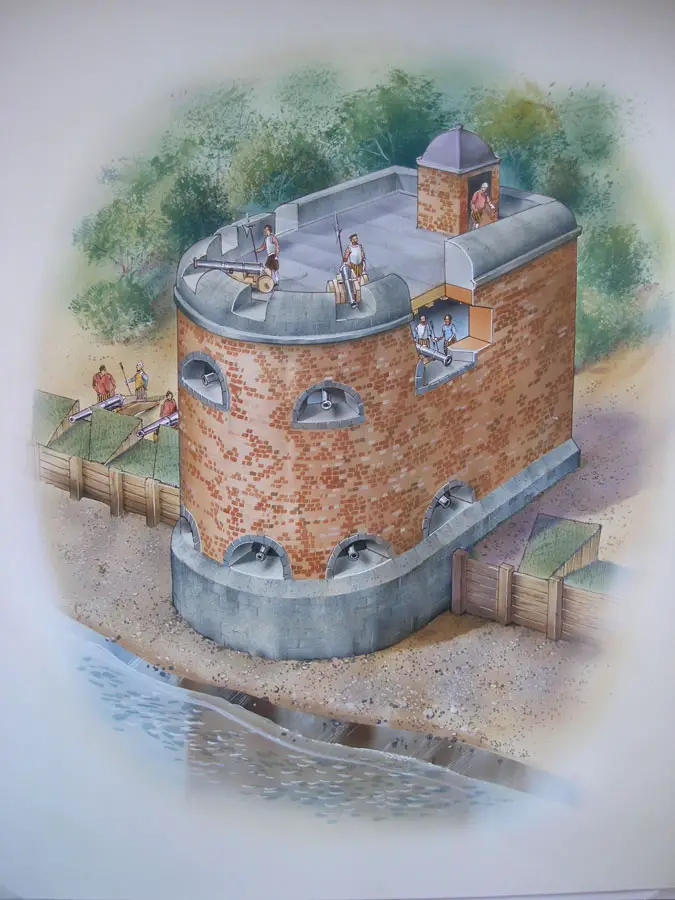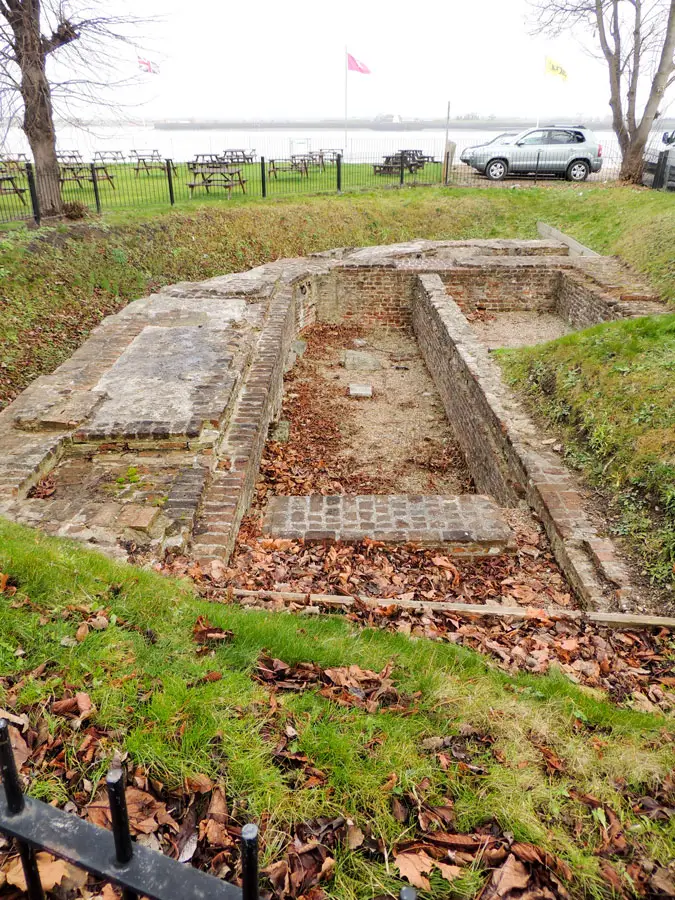December 8: Gravesend Blockhouse
Thank you to Toni Mount for today's article all about Gravesend Blockhouse. Toni is a prolific author and historian and has written many Tudor and medieval books, both fiction and non-fiction.

Gravesend Blockhouse was part of Henry VIII's ‘Device Forts’ built along the river Thames around 1539, in response to fears of a possible invasion of England by France or Spain. Five block houses were built on the river as artillery fortifications located at Gravesend and neighbouring Milton, some 20 miles east of London and also at Higham on the southern bank of the river and opposite at Tilbury and East Tilbury on the northern bank, being strategic points on the river to defend the approach to London and Henry’s dockyards at Woolwich and Deptford. The Device Forts programme also included other coastal defences and was hugely expensive, costing a total of £376,000.
Despite having been partially demolished in the past, substantial remains survive of Gravesend Blockhouse. These provide archaeological evidence as to the original function and layout of the blockhouse, and its 16th-century construction. A large part of the blockhouse has not been excavated and retains potential for further investigation. The blockhouse was originally D-shaped in plan. It had a curved front facing the river, two angled faces on the landward (south) side and a curved bastion on the west side. The western part of the semi-circular front wall survives as visible remains. The blockhouse was built of brick and the gunports are visible as in the main front wall.
The Gravesend Blockhouse crossed its fire with Tilbury Blockhouse on the north bank of the river and also guarded the ferry crossing between Gravesend and Tilbury. The appearance of the blockhouse is known from a plan by John Romer made in 1715. There were earthen gun lines along the river bank on either side of the blockhouse, collectively armed with 21 guns. The small garrison consisted of a commander and eight others. Repairs were carried out to the blockhouse in 1588 and 1667.
The Milton blockhouse was demolished in 1558 but in 1974 the site was rediscovered and excavated by the Kent Defence Research Group. The outline of the blockhouse is indicated on the road and pavement and in the grass by a series of markers.

You can see all of Toni Mount's books on Amazon: https://www.amazon.com/Toni-Mount/e/B0034P0FF8
